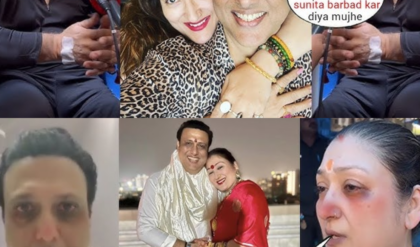The Impact of Sensationalism on Steph Curry and the NBA Community
In recent years, the world of NBA coverage has shifted from in-depth analysis to a fast-paced, sensationalized media landscape. At the center of this shift lies a growing trend of rumors and speculative content that not only misrepresents the truth but also warps the public perception of key players. One such player who has been the subject of relentless media scrutiny is Steph Curry. While Curry is widely regarded as one of the greatest basketball players of all time, his career and legacy have been clouded by unfounded rumors and clickbait stories that detract from his actual performance on the court.
FULL VIDEO:
The Rise of Sensational Rumors
The most recent example of this trend involves a hypothetical trade scenario where Curry was rumored to be heading to the Los Angeles Lakers. The story, initiated by a speculative report from Bleacher Report, suggested that the Golden State Warriors would trade Curry for Austin Reaves, Ben Simmons, and two future draft picks. Despite the absurdity of this proposal, it quickly gained traction, with media outlets and fans reacting as though it were a legitimate possibility. The story spread like wildfire, not because of its validity, but because the NBA community has grown increasingly reliant on drama and speculation to stay entertained.
This kind of sensationalism reflects a larger issue: the media’s willingness to amplify baseless rumors for the sake of engagement. The unfortunate reality is that these stories thrive in an environment where many fans and content creators prioritize hot takes over factual reporting.
Misinformation and the Media’s Role
What’s even more concerning is the media’s persistence in ignoring the truth when it doesn’t fit their preferred narrative. For example, the rumors surrounding Curry’s alleged dissatisfaction with the Warriors and his desire to join LeBron James in Los Angeles were proven false when he extended his contract with Golden State. However, the story of Curry leaving the Warriors continued to circulate, largely because it aligned with the media’s desire to create controversy.
Curry’s contract extension was even shortened due to the “Over 38 Rule,” a regulation in the NBA’s collective bargaining agreement that limits the length of contracts for players who will turn 38 during their contract term. This crucial detail, however, went largely unreported because it didn’t support the narrative of Curry potentially leaving Golden State. The truth, it seems, is often less interesting than the drama.
A History of False Narratives
This isn’t the first time Curry and the Warriors have been at the center of misinformation. After the Warriors lost in the 2019 NBA Finals and Kevin Durant left in free agency, many proclaimed the end of their dynasty. When Curry broke his hand shortly after the season started, rumors circulated that the Warriors were purposely holding him back to tank for better draft picks. These stories were perpetuated by both mainstream media outlets and fan speculation, despite there being no evidence to support them.
Even before the 2019 season, critics often downplayed the Warriors’ success, calling their championships a fluke or predicting their imminent downfall. Each time, these predictions proved premature, but they demonstrate how eager the NBA media landscape is to jump to conclusions and focus on negative narratives.
Recency Bias and the Decline of Rational Analysis
One of the most damaging aspects of this shift is the rise of recency bias, which favors immediate events and performance over long-term achievements. A prime example is the comparison between Steph Curry and Damian Lillard, with media personalities asserting that Lillard had overtaken Curry as the league’s top point guard. These claims were made during a period when Curry was recovering from injury, further skewing the analysis in favor of Lillard.
Such claims often ignore the broader context, choosing instead to stir controversy and fan engagement with provocative statements. This focus on generating reactionary content—rather than thoughtful analysis—has led to a distorted understanding of players’ legacies and performance.
The Need for Authenticity in NBA Journalism
The Curry saga is a microcosm of a broader problem plaguing NBA media today: the prioritization of clicks and engagement over the truth. Major media outlets and independent content creators alike have increasingly leaned into sensationalism, creating exaggerated narratives and fueling baseless rumors for the sake of staying relevant. This approach does a disservice to the players, the game, and the fans, who deserve better.
Steph Curry’s career is an example of how misleading media coverage can be when it’s not grounded in reality. His legacy has been shaped by both his extraordinary achievements on the court and the unfounded rumors that continue to swirl around him. As the media continues to churn out content, it’s essential for fans to recognize the difference between legitimate journalism and clickbait.
In a world where recency bias reigns supreme, it’s more important than ever to return to the roots of sports journalism: a focus on the game, the players, and the facts. Only then can we truly appreciate the legacy of athletes like Steph Curry without the distortion of sensationalism.





